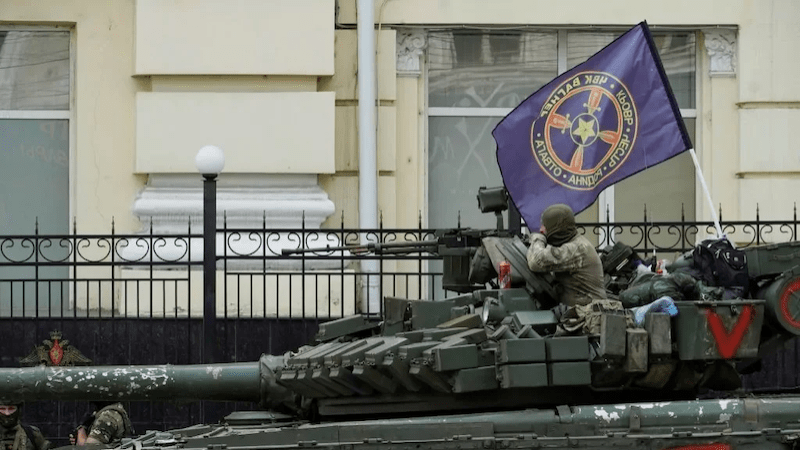
The Further Degradation of the Russian Army
By Pavel Luzin, Visiting Scholar of the Russia and Eurasia Program at The Fletcher School
Several demonstrative developments reveal that the political positions of the Russian Ministry of Defense’s (MoD) leadership remain intact for now, despite these officials’ poor performance in responding to the Wagner Group mutiny. In recent days, the MoD has announced that it received all the arms from Yevgeny Prigozhin’s mercenaries, that Defense Minister Sergei Shoigu inspected arms factories in Tatarstan and that Chief of the Russian General Staff Valery Gerasimov reasserted his full control over combat activities in Ukraine and suddenly dismissed Lieutenant General Ivan Popov as the commander of the 58th Combined Arms Army of the Southern Military District after Popov’s pressing demands for more troop rotations and sustainable artillery supplies. This last event even resulted in a public scandal breaking out among politicians from the United Russia party (RIA Novosti, July 10; Tvzvezda.ru, July 11; Mil.ru; Rtvi.com, July 12; TASS; Ura.ru, July 13).
The conflict between Gerasimov and Popov became more widely known when Popov made it public amid his own criticism of the Russian leadership’s poor execution of the war against Ukraine. This fact in and of itself testifies that the Russian military leadership is far from being consolidated. It also emphasizes the growing issues Russian forces in Ukraine face, including a severe lack of human and material reserves despite the regular official optimistic statements. For example, one such statement was made by Popov himself just one month ago, in which he described operations in the Zaporizhzhia direction as being “effectively and efficiently” carried out “with great benefit for the common cause” (Tvzvezda.ru, June 8). Nevertheless, Russian capabilities and manpower continue to break down. Overall, this means that the intensified systemic and combat pressures on Russian units may indeed transform the permanently growing quantitative losses into qualitative changes on the battlefield, where troops will lose the ability, or desire, to resist.
However, a lack of consolidation within the Russian military leadership does not necessarily mean that a significant number of Russian generals is in favor of ending the war. Likely, tough discussions are ongoing behind the scenes regarding how to continue the war in the currently deteriorating combat, political and economic circumstances. Even if some Russian commanders realize that the war cannot be won, their dominant motivation will remain avoiding defeat at any cost for as long as possible. This in turn means that the only way for Ukraine to effectively end the fighting will be the total defeat of Russia on the battlefield, which will end hostilities with a limited chance for future Russian aggression, at least in the short term.
Moreover, the impact of the transfer of arms from the Wagner Group back to the Russian Armed Forces should not be underestimated. With this action, the MoD declared that it received more than 2,000 units of various heavy arms and vehicles, including howitzers; mortars; T-90, T-80 and T-72B3 main battle tanks; as well as armored vehicles. In addition, Russian defense officials announced the successful transfer of 2,500 tons of artillery munitions and mines (between 50,000 and 60,000 rounds), as well as some 20,000 firearms (The Moscow Times, July 12). All this confirms reports that Prigozhin had been receiving immense state support for years. It also highlights the fact that one of Wagner’s primary functions was as a counterbalance to the Russian Armed Forces in general and to every potentially ambitious military commander in particular. Now, this counterbalance seems to have been eliminated.
Nevertheless, the published footage reportedly displaying the transfer of arms and vehicles shows three basic types of equipment: a significant number of commercial trucks with old-fashioned anti-aircraft cannons mounted on them; some commercial trucks and buses, armored vehicles, as well as self-propelled and towed artillery; and some main battle tanks, most of which have never been modernized (Kyiv Independent, July 12). Moreover, the MoD declared that many of the heavy arms have never been used in combat, yet almost all are in need of extensive technical maintenance and repair before being employed on the front. Thus, it appears that the Russian military largely supplied the Wagner mercenaries with arms from Soviet-era storage—and not all were operational.
Considering the fact that Russian regular troops are being forced to rely more and more on Soviet-era arms, it is possible to conclude that the productivity of Russia’s repair facilities have reached their objective limits—just as the military factories seem to have reached a similar limit in producing and modernizing various weapon systems (Mil.ru, July 12; Lenta.ru, July 12).
Consequently, as the Ukrainian counteroffensive continues, the Russian Armed Forces, with its growing internal tensions together with political leaders who still seem to be disoriented following Prigozhin’s mutiny, are coming to a critical turning point in which they need to come up with answers on how to continue fighting if no one in the Kremlin is willing to take full responsibility for waging this war. At the same time, further organizational and material degradation of the Russian army may allow the Kremlin to avoid the potential political threat from certain military generals, but only if it seriously considers ending the war before it is too late.
(This post is republished from The Jamestown Foundation.)
